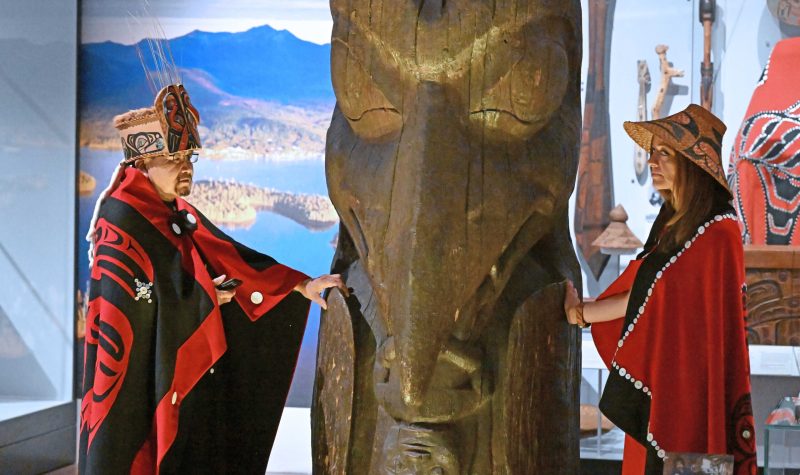Three delegates from the Nisga’a House Ni’isjoohl went to the National Museum of Scotland on Aug. 22 to start discussing the repatriation of their totem pole that was stolen nearly a century ago.
In 1929, Marius Barbeau stole a Nisga’a memorial pole that belonged to the house of Ni’isjoohl. The pole was carved and erected in the 1860s and told the story of warrior Ts’wawit who was killed in a conflict before he could become chief.
The delegates are all members of the house: Sim’oogit Ni’isjoohl (Chief Earl Stephens), Shawna McKay, and Noxs Ts’wawit (Dr. Amy Parent). They are the only living members of their house to have seen the pole.
While the hope is to eventually bring the pole home, Parent said that the museum has agreed to display signs that state where the pole comes from and rightfully belongs until that time.
Stealing traditional Indigenous belongings was very common during the potlatch ban that spanned from 1885 to 1951. Barbeau was a colonial ethnographer who stole multiple totem poles from the same village but was not successful in the transportation, which is a story Parent talked about:
There has been a number of repatriation efforts across Canada, with more than 300 materials being returned to the Nisga’a Nation in September 2010. So far only one totem pole in Canada has been successfully repatriated from a European museum, the Haisla G’psgolox Pole.
Reclaiming traditional artifacts is becoming increasingly important to Indigenous communities, encouraging further decolonization. Parent talked about wanting this to happen for the youth.
“We just want our children to be able to wake up everyday and to not have to search so hard for the stories of who they are with every breath they take.”
Repatriating this pole will give the Nisga’a people and the house of Ni’isjoohl the ability to learn more about their history and the philosophies of their ancestors.
Listen to the full radio story below:


